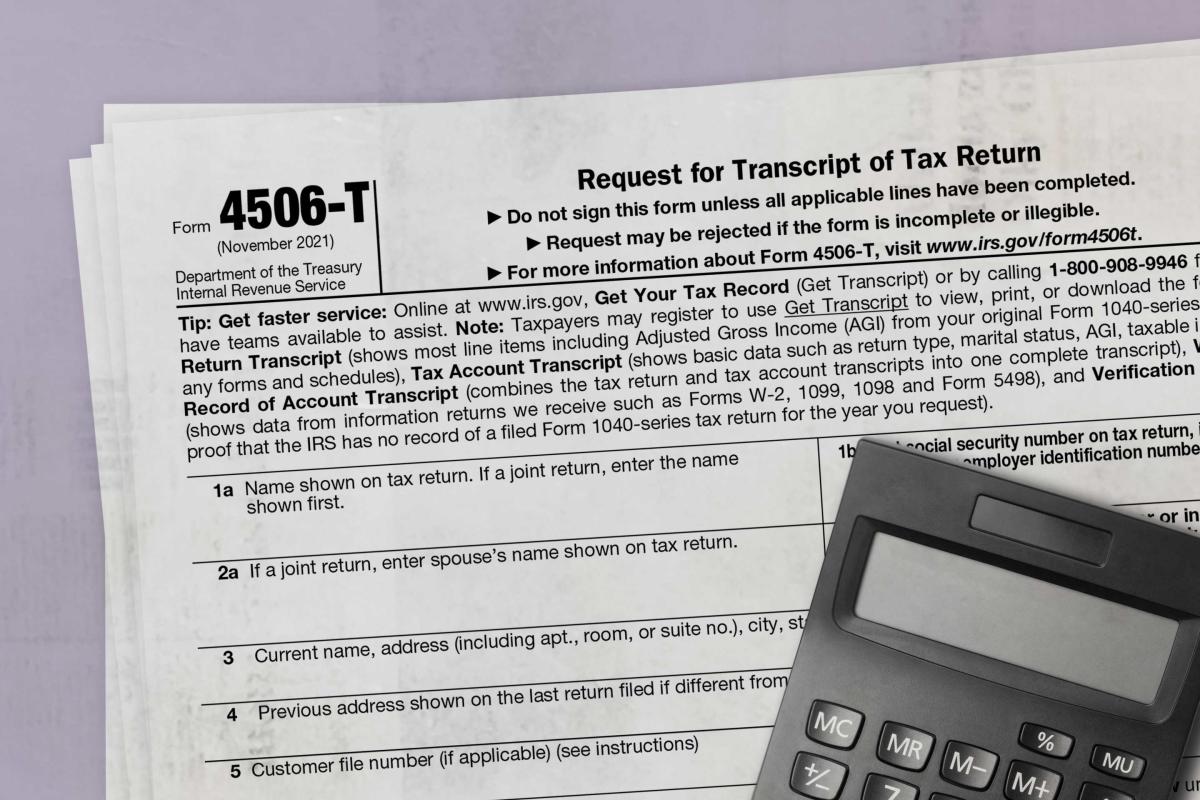Personal Finance
How to File Back Taxes

Millions of Americans are on the hook for filing federal income taxes every April. The U.S. government generally expects that whenever you earn a certain amount of income, you’ll submit that information to the IRS — and settle up in a timely fashion.
But what if you don’t?
Whether it’s accidental or intentional, missing a tax deadline can have serious consequences. You may miss out on a tax refund, or you may face fines from the IRS for not following the law. You may owe back taxes, a phrase that can refer to overdue taxes and returns from years past.
Filing back taxes can be an intimidating process, especially if you’re worried about finding the right forms and paying your obligations. But it doesn’t have to be painful. This guide will walk you through exactly how to file back taxes.
Steps to filing back taxes
Gather your information
Back taxes require the same tax information that on-time returns do. The IRS will need to know about your past wages, investment income, unemployment benefits, freelance checks and more from the appropriate year(s). Most of this data can be found on forms W-2 and 1099.
To fill out a 1040 form, which is the basic income tax return for individuals, you’ll also need to have your Social Security number or individual taxpayer identification number as well personal information for you, your spouse and your dependents (if applicable).
What to do if you’re missing records
Ambrea’ Lacy, a tax professional in Texas, says one of the biggest worries for clients with back taxes is that they’re missing prior-year returns and forms. “The issue they usually have is, ‘Oh my gosh, I don’t know if I have all my W-2s, my 1099s,’” she says. “‘I probably lost it, maybe in a move; it’s been misplaced.’”
You can contact your old employer(s) and financial institutions, but unless they’re feeling generous, they might not want to help you dig up years-old tax documents.
If you’re in this situation, don’t worry. You can request what’s called a tax transcript from the IRS. There are different types of transcripts, but if you’re missing information about your earnings, the one you’ll likely want is a wage and income transcript. Wage and income transcripts go 10 years back and include the federal income info the IRS has from your old W-2s, 1099s, 1098s and more.
“Any tax document that’s gonna get mailed to you is on that tax transcript,” Lacy says.
The quickest way to get and view a tax transcript is to use the IRS’s Get Transcript Online tool. If that doesn’t work, you can call 800-908-9946, ask for your transcript by mail or send in Form 4506-T to request the years you need. (It’ll take five to 10 calendar days for the papers to be delivered to you.)
If you’re accessing your transcript yourself online, Lacy says you’ll likely get a masked transcript that redacts personally identifiable information for entities and individuals. To get an unmasked version, you’ll have to ask that one be mailed to you or team up with a tax professional who can access it on your behalf.
Complete and submit the return forms
Though the specific list of forms needed to file back taxes depends on your personal financial situation, below are some of the documents you’ll likely have to round up for the year(s) you need to file.
Forms for filing back taxes
They include:
-
Form W-2, a wage and tax statement
-
Form 1099-G if you received unemployment benefits
-
Forms 1099-MISC or 1099-NEC if you completed contract work or received certain kinds of payments
-
Forms 1099-INT and 1099-DIV if you had interest income or dividends
-
Form 1099-R if you took distributions from a retirement account
-
Form SSA-1099 if you got Social Security benefits
-
Form 1098 if you received over $600 of mortgage interest
-
Form 1098-T if you paid tuition expenses
-
Records that prove you’re eligible for certain deductions and credits
Where to submit back taxes
The IRS says you can “file your past due return the same way and to the same location where you would file an on-time return,” though if you received an IRS notice you should follow its specific instructions.
We’ve rounded up the best tax software programs here, but note that the fine print may be different for the current year than it is for back taxes.
For example, tax prep service TurboTax has links on its website where you can buy products to prepare your 2019, 2020 and 2021 taxes, though it says “you will have to print out and mail in your tax return for previous years.” In other words, you can’t file these tax returns online through TurboTax.
TaxAct will allow consumers to buy its software for 2021, but you can’t start returns for 2017 through 2020 online. (Returns for 2016 and earlier aren’t available online.) You may want to consult with an expert who can access the TaxAct Professional program to file prior-year returns.
H&R Block also requires a software purchase for the year(s) in question — you can’t do it online — but it offers IRL options as well if you want to physically visit an office.
Check the status of your return
The IRS says it typically takes six weeks to process past-due returns that don’t have errors.
If you want to get help with or find out the status of your past-due tax return, you can call the IRS at 800-829-1040. You’ll need to have handy your Social Security number or individual taxpayer identification number, birthday, filing status, prior-year(s) return and any letters the IRS previously sent you.
Tax Day is in a couple of weeks. Why wait to file?
April 18, 2023
File your state and federal taxes with the help of a Tax Preparation Software by clicking above.
File Your Taxes
Guide to back taxes
Why should I file back taxes?
Perhaps the biggest reason to file past-due taxes is to claim a refund. There are a couple exceptions, but the IRS typically requires you to file within three years of a tax return’s original due date in order to get that refund. Tax credits are handled the same way.
If you’re a taxpayer living in the U.S., don’t have certain international disclosures to make, and the government owes you or your tax liability is zero, “it’s not as big of a deal” as when you owe the government, says Ryan Losi, a certified public accountant (or CPA) with PIASCIK.
But if you’re on the hook for a tax bill and you skip out on filing, the IRS may charge you interest and penalties. The IRS says failing to file your taxes could also impact your Social Security benefits and chances of getting quickly approved for a loan.
It’s prudent in general to have your income on file with the IRS. Not only did it help some people get their stimulus checks and advance child tax credit payments faster during the pandemic, but Losi says it also could also establish a record you’ll need later.
“There may be tax attributes in those years that carry forward,” he adds. “For example, if there’s a business loss, or maybe you had a capital loss, sale of securities or investments — those might offset future taxable income. But if you haven’t substantiated and documented it, generally it’ll get denied.”
What happens if you don’t file back taxes?
The IRS might file a substitute return for you, and it won’t be as kind as you would be if you were doing it yourself. Its calculations probably won’t include all the deductions, credits and exemptions you technically qualify for.
You may also have to pay up. If you owe the IRS, the failure-to-file penalty is 5% of your unpaid taxes for each month (or partial month) past the due date, up to 25%. After 60 days, the minimum penalty is $435 or 100% of the tax on the return. You could also face a failure-to-pay penalty and interest.
Beware: The IRS will start the collection process if you ignore a tax debt and may pursue a federal tax lien on your property.
What to do if you can’t afford to pay back taxes
Because of the potential for interest, the IRS advises you to pay your tax bill in full as soon as possible.
If you owe less than $100,000 and can’t pay right away but will be able to soon, you may want to pursue a short-term payment plan. Short-term payment plans can buy you an extra 180 days and don’t cost anything to set up. You can apply using the Online Payment Agreement tool at IRS.gov or call 800-829-1040.
If you’re unable to pay that quickly, there are other options.
Request an installment agreement
If you can’t afford to cover your unpaid taxes, you can request an installment agreement by filling out Form 9465 (or, if you’re an individual who owes less than $50,000, applying with that Online Payment Agreement tool). Fees start at $31 for online setup but vary based on your income level, how much you owe, how you pay and how you set up the long-term payment plan.
Request an offer in compromise
If paying your bill would be a serious financial hardship, you might consider an offer in compromise, which is essentially a settlement with the IRS for less than your total bill. The IRS warns that this program is “not for everyone” given its restrictions and rigor. Fees depend on your income but start for most at $205 (plus an initial payment on your bill).
You can apply for an offer in compromise, or OIC, by completing Form 656. Lacy says it’s a good idea to hire a tax professional if you’re planning to pursue an OIC because it’s “a lengthy process, and it does take diligence.”
Back taxes FAQ
How many years can you file back taxes?
The IRS says it’ll accept “all delinquent returns submitted by a taxpayer, whether upon his/her own initiative or at the request of a Service representative,” except in cases of fraud or intentional avoidance.
“Taxpayers can file back taxes for as many years as they are behind,” Lacy says.
How to file back taxes without records
You will need records in order to file your past-due tax returns. To get your old tax data, reach out to the entities that issued the prior-year documents (like your old workplace) or request a transcript using the instructions above.
The IRS says that wage and income transcripts are available for a decade, but watch out — information about local and state taxes isn’t included.
How long does the IRS have to collect back taxes?
The IRS is generally supposed to assess taxes you owe within three years of you filing a return or its due date. But if you omit a substantial amount of income, gifts or excise tax on your return, it has six years to do so. (If your return was fraudulent, though, there’s no limit to how long it can take.)
From there, the IRS has 10 years to actually collect the payment.
How much does it cost to file back taxes?
If you owe the IRS, there are fees for not filing your taxes and paying the balance on time. (You may also qualify for first-time penalty abatement.) But the actual filing doesn’t cost extra — depending on what preparer you use.
You may be able to file for free, though you might have to pay for postage to mail in the printed return.
Can you file back taxes electronically?
In general, whether you can submit your back taxes online depends on what you’re filing and for which years, Losi says. (The IRS portal for electronic filing also tends to shut down for a few weeks every year for maintenance, so keep that in mind.)
Though paper returns take way longer to process, Losi says you might want to snail-mail in a back tax return so you can include a cover letter that explains why you didn’t meet the tax deadline — death of a spouse, major medical issue, et cetera — with the hope that the IRS “will be a little bit more accommodating.”
Bottom line to filing back taxes
Filing back taxes is important for several reasons. It’s a way for you to get old tax refunds you’re owed, put your income information on file with the IRS and avoid penalties from the government.
You’ll need to round up information about your income and taxes for the year(s) you’re filing. Dig up those old W-2s and 1099s; if you can’t find them, request a tax transcript from the IRS. Locate documentation about any credits you may qualify for. Do your taxes carefully, because mistakes will make IRS processing will take even longer.
You can do this all yourself, but Losi says you may want to hire a professional to guide you through it if you’re multiple years behind on taxes or have a complex financial situation. (Check out our list of the best tax relief companies to get started.)
Connecting with an expert may also put you at ease, especially if you’re afraid to find out how much you’ll owe the IRS.
“If you give us ballpark numbers, we can give you an idea of what your obligation might be, if any,” he adds. “A lot of times, if there’s uncertainty and anxiety, that can be resolved quickly.”
More from Money:
How to File Your Taxes for Free
10 Best Tax Software Programs
5 Best Tax Relief Companies
© Copyright 2023 Money Group, LLC. All Rights Reserved.
This article originally appeared on Money.com and may contain affiliate links for which Money receives compensation. Opinions expressed in this article are the author’s alone, not those of a third-party entity, and have not been reviewed, approved, or otherwise endorsed. Offers may be subject to change without notice. For more information, read Money’s full disclaimer.
Read the full article here

-

 Side Hustles6 days ago
Side Hustles6 days agoHow Charlotte’s Rally Pickleball Got Its Start
-

 Make Money6 days ago
Make Money6 days ago5 Surprising Ways Trump’s Trade Agenda Could Affect What You Pay at Checkout
-

 Investing6 days ago
Investing6 days agoQuantum stock soars on new file system client By Investing.com
-

 Side Hustles4 days ago
Side Hustles4 days agoKickstart Your Year With These Entrepreneurial Health Checkups
-

 Side Hustles3 days ago
Side Hustles3 days agoExpand Your Global Reach with Access to More Than 150 Languages for Life
-

 Side Hustles2 days ago
Side Hustles2 days agoKFC Announces Saucy, a Chicken Tenders-Focused Spinoff
-

 Investing2 days ago
Investing2 days agoPalantir, Anduril join forces with tech groups to bid for Pentagon contracts, FT reports By Reuters
-

 Side Hustles3 days ago
Side Hustles3 days agoThis AI is the Key to Unlocking Explosive Sales Growth in 2025


















